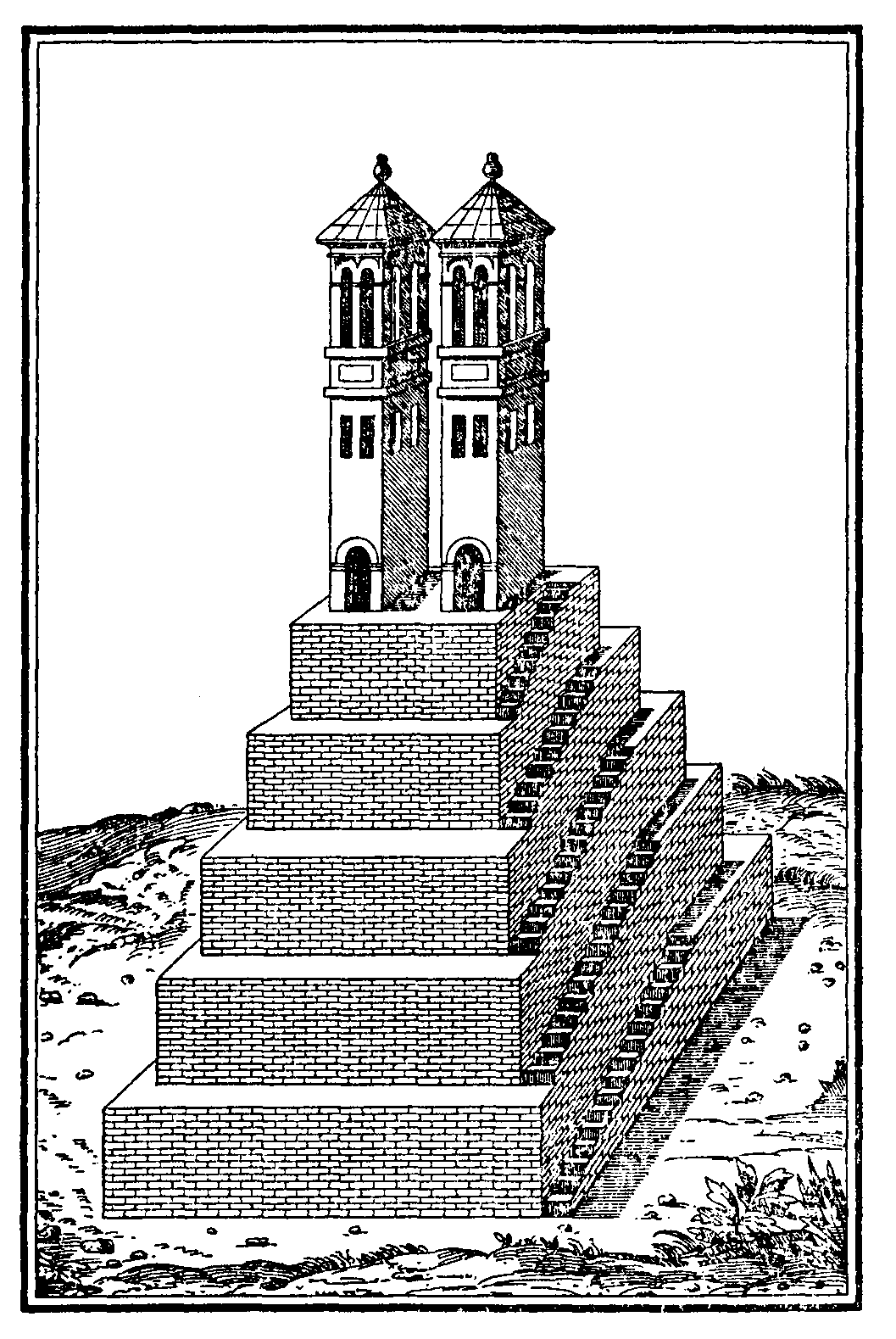Contents
Introduction
Chapter 1
Chapter 2
Chapter 3
Chapter 4
Chapter 5
Chapter 6
Chapter 7
Chapter 8
Chapter 9
Chapter 10
Chapter 11
Chapter 12
Chapter 13
Chapter 14
Chapter 15
Chapter 16
Chapter 17
Chapter 18
Chapter 19
Chapter 20
Chapter 21
Chapter 22
Chapter 23
Chapter 24
Notes |
CHAPTER XIV: WHAT THESE TOWERS WERE LIKE [p.49]

Click on image to enlarge
THEY make a tower, square, of one hundred and fifty paces, more or less, long, and one hundred and fifteen to one hundred and twenty wide. They begin this edifice in a solid mass and, arriving at a height of two men, they leave on three sides a passage about two paces and for one of the long sides they make a stairway until they return to the height of two bodies of a man; and the construction continues all solid of lime and mortar. Here for the three sides they leave a passage of the two paces and for the other they go putting up the stairway; and in this manner it rises so that the steps reach to be one hundred and twenty or one hundred and thirty. They leave on top a little square and in the middle they begin other two towers which reach to the height of ten or twelve bodies with their windows above. [p.50] In these high towers are the idols well arranged and well kept, and also all of the place well decorated. Where they keep the principal god no one is permitted to enter, only the high priest, and this principal god has the distinct name according to the province; because in the great City of México he is called Horchilobos [Huitzilopochtli] and in another city which they call Chuennila [Cholula] Quecadquaal [Quetzalcoatl] and also in the others. They always celebrate the festivals of their idols sacrificing many men and women, boys and girls, and when they feel the need of some necessity such as rain, or excess of rain, or when they see danger from their enemy, or suffer from some other calamity, then they make these sacrifices in the following manner. [see plate] |


